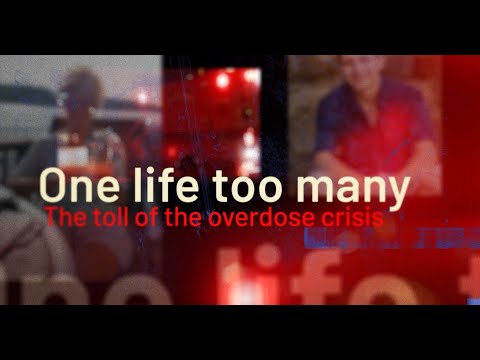Introduction
This incredibly informative documentary from NOVA PBS discusses opioid addiction, highlighting that addiction is not a moral failing, but rather, a treatable chronic medical condition. It provides a general overview of the science behind addiction, detailing how dopamine, the reward pathway, and other brain regions change as a result of substance abuse, and how these changes result in drug-seeking behaviours and withdrawal. While there are several personal stories from those affected by addiction, the primary focus of this documentary is to provide education on the science behind addiction and the importance of evidence-based treatments.
Quotes
“Opioids, like OxyContin, are chemically similar to morphine, found in the opium of the poppy plant. They mimic the body’s natural pain relievers, like endorphins, which bind to proteins, called receptors, calming pain and inducing euphoria. Prolonged opioid use can alter the brain and lead to addiction, manifested by cravings and compulsive drug use despite negative consequences.”
“Addiction runs in families, and studies suggest that genes play a role in determining one’s risk. Addiction is a complex disorder, and as a complex disorder, there’s not one addiction gene. It’s multiple genes and multiple other factors that interact with your genetics that increases risk.”
“The reward pathway in the brain, primarily controlled by a chemical messenger called dopamine. Dopamine tells your brain to pay attention, that whatever it just experienced is worth getting more of. It’s released by endorphins or whem we encounter anything pleasurable or exciting – especially drugs that can push dopamine levels 10x higher than normal. As drugs raise dopamine levels, they also alter the connections between brain cells, creating memories of euphoria that trigger fierce cravings.”
“When opioids are abruptly stopped, stress hormones are released at catastrophic levels. This imbalance triggers the opposite symptoms of opioid use, including shaking, anxiety, pain, and intense dysphoria.”

“Patient after patient after patient will tell me the same story. “Listen, Doc, “I am not using to get high anymore. I am just using not to be sick anymore.” What Suboxone does is it satisfies those cravings in a way that they’re under control.”
DR. JAMES BERRY
“Abstinence-based programs really, for opioid use disorder, are setting people up to fail and to relapse. And in the face of this crisis, where we know that every single time that somebody uses an opioid, they are at real risk of overdosing and dying, this should never be recommended as a primary intervention.”
“Methadone, a long-lasting opioid that curbs cravings from heroin and pain pills without causing euphoria. Methadone binds to opioid receptors and normalizes brain functions altered by addiction, including dopamine levels.”
“In 2003, the opioid buprenorphine became available under the brand name Suboxone, which could be taken at home. Less potent than methadone, Suboxone only partially activates opioid receptors to reduce cravings. If taken as prescribed and not misused, both drugs cut mortality by about half. After a year, 40-90% of patients are in recovery.”
“Scans reveal that chronic drug use is associated with reduced gray matter, especially in the prefrontal cortex. Those regions are essential to make advantageous choices – to make the right decision at the right time. So, the lower the grey matter, the more the decision-making is impaired. You have a decrease in the ability your behaviour.”
“Heroin changes the way our DNA functions. It turns on genes that should not be on. And turns off genes that should be on. And so that imbalance changes the brain function. The genes most affected regulate the brain’s key chemical messenger, called glutamate, which is essential for sending signals between neurons, making thinking, memory, and learning possible.”
“The drug naloxone, sold under the brand name Narcan, can reverse an overdose by pulling opioids off receptors in the brain. Although Narcan saves lives, it can also put patients into acute withdrawal. Without medications to control cravings, many will overdose again.”
“In Charleston, West Virginia, Dr. Stefan Maxwell cares for babies born dependent on drugs. It’s a withdrawal syndrome. They have vomiting, diarrhea, frantic behavior, they may scratch themselves. These babies may go for many days without sleeping or eating. And symptoms may last up to three months. Babies in acute withdrawal are weaned off opioids by giving them smaller and smaller doses.”
“Trauma is an experience that overwhelms you, that leaves you bereft, paralyzed, and with no way out. And it can come in many different contexts. It can be physical, verbal, sexual abuse, childhood neglect. And these problems early in life put you at risk later in life.”
RECOMMENDED BOOK: The Body Keeps The Score
“In 2003, Vancouver sanctioned the first legal site in North America where people could inject illegal drugs under medical supervision. Called Insite, the program provides clean needles to prevent the spread of infectious diseases, drugs to reverse overdoses, and help accessing services, like medically assisted treatment.
Watch Now!
Continue Learning
Hey there! I hope you found this resource useful! If you’re interested in learning more about the topics discussed, you can browse through these additional resources. Please don’t hesitate to contact me if you need anything.
Opioid Crisis
- California’s Opioid Crisis
- Facts About Naltrexone [PDF]
- Fentanyl: America’s Grim New Opioid Addiction
- How America Got Hooked
- How Do Opiates Affect the Nervous System?
- How Drugs Hijack Your Brain’s Mu Opioid Receptors
- Opioid Addiction (CAMH)
- Opioid Overdose (WHO)
- Opioids & the Body: The Science Of An Overdose
- The Impact of the Deadly Fentanyl ‘Plague’ on One American City
- The Opioid Crisis in Canada: A National Perspective
- Understanding the Opioid Overdose Epidemic
- What Led to the Opioid Crisis – and How to Fix It
Prescription Addiction
- Addicted to Prescription Drugs at Age Eleven
- Commonly Abused Prescription Drugs
- Hooked: The Dangers of Prescription Drug Addiction
- Opioid Addiction Is the Biggest Drug Epidemic in U.S. History. How’d We Get Here?
- Prescription Drug Abuse (Mayo Clinic)
- Prescription Drug Abuse (WebMD)
- Prescription Drugs (CCSA)
- Prescription Opioids (CAMH)
- Pain Management and the Opioid Epidemic: Balancing Societal and Individual Benefits and Risks of Prescription Opioid Use
- Relationship between Nonmedical Prescription-Opioid Use and Heroin Use
- The Most Addictive Prescription Drugs on the Market
- Understanding Addiction Prescription Drugs
The Science Behind Addiction
- 2-Minute Neuroscience: The Reward System
- Addiction and Brain Reward and Anti-Reward Pathways
- Addiction Explained, Rises & Falls in Dopamine
- Dopamine and Addiction: Separating Myths and Facts
- Dopamine System, Craving & Pursuit Explained
- Drugs, Brains, and Behavior
- How an Addicted Brain Works
- Introduction to the Reward Pathway
- Reward Circuitry in Addiction
- The Neurobiology of Drug Addiction (NIDA, 2007) [PDF]
- The Neuroscience of Drug Reward and Addiction
Share Your Opinion
If you have finished reviewing this resource and have some spare time, I would greatly appreciate it if you could provide your opinion. Was it useful and informative? Did you run into any problems or find something distasteful? I’m thankful for any constructive and helpful feedback to help me improve.
* Your review will be for this specific post and as a result will affect the star rating of the resource. All submissions are reviewed for approval to filter out spam and inappropriate comments. Your email is requested as I may want to follow-up with you. Please also be aware that your review may be placed publicly on this website for others to read.
There are no reviews yet. Be the first one to write one.




